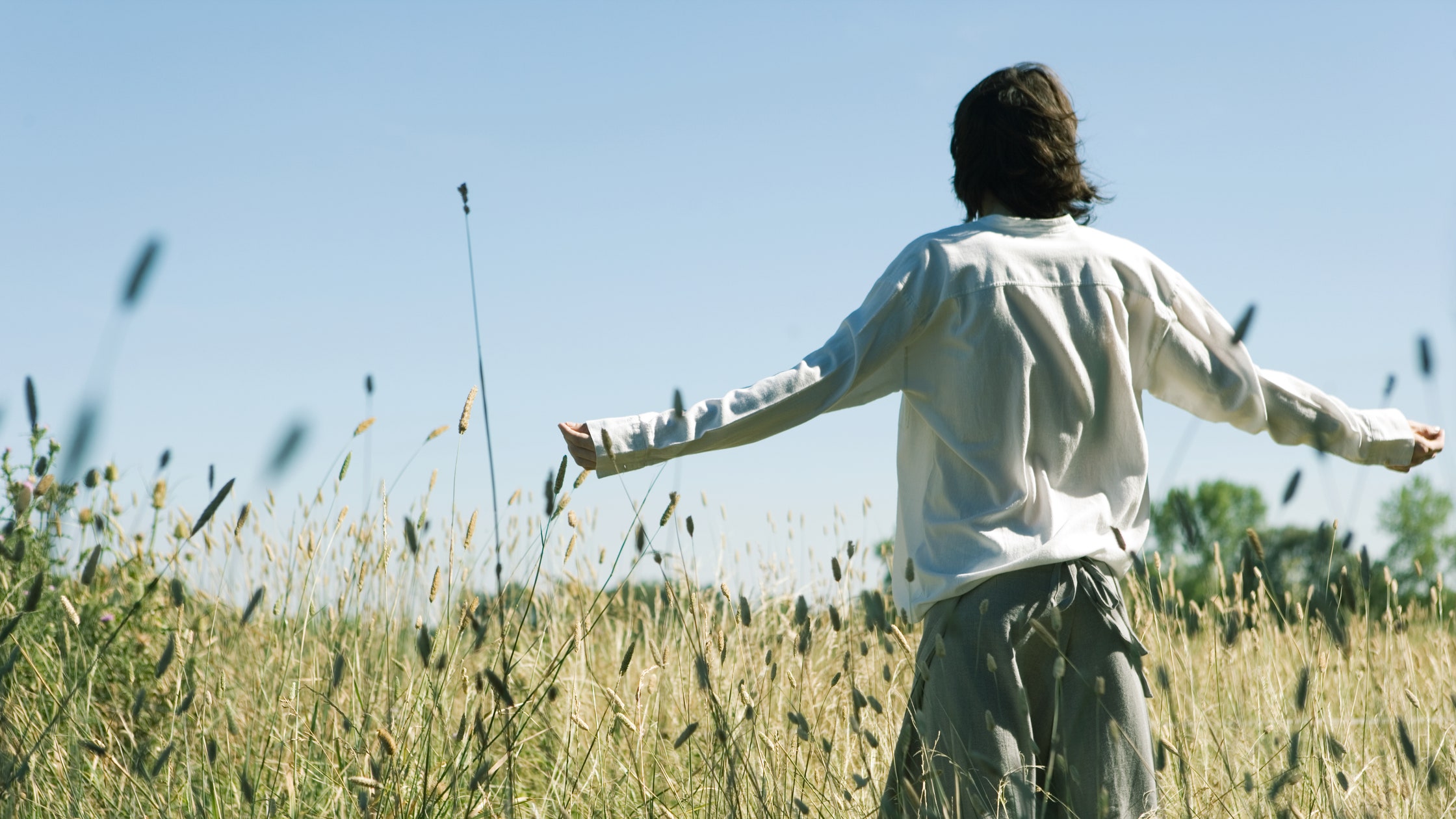The Transformative Power of Breathwork
There’s a simple wellness hack that devotees promise will revolutionize mental and physical health, regulate the nervous system, and promote emotional healing. And we’re doing it already, says Lydia Gard.
Take a breath, right now. Inhale slowly and deeply. And then let it go. Repeat. You’re doing breathwork: bringing consciousness to something automatic. We take breathing for granted because it’s involuntary, but you only need to starve your body of breath for a minute to recognize the impact it will have on your mind and body. We can survive three days without water and several weeks without food, but only a matter of minutes without breath. You may have heard that breathwork is the new yoga, and if you just rolled your eyes, welcome to the club. But breathwork isn’t new: it is ancient. It is what Hindus call Pranayama, repackaged for Westerners.
Exploring Breathwork Retreats
I tend to err on the side of science, so when I am invited to join a movement and breathwork retreat in the rugged landscape of Andalucía, I pack my running shoes, just in case the breathwork guru is an urban shaman wafting white sage. However, it is a relief to meet Martin Petrus, a former graphic designer from Poland, who comes across as a “normal” guy in a T-shirt. He is not sporting the overzealous grin of a New-Age fanatic, but instead possesses bright eyes and a gentle spirit that are quietly magnetic. Petrus came to breathwork by accident via a Wim Hof workshop on cold-water exposure and credits it with changing the course of his life. “It gave me a deep understanding of where I am and where I am going,” he shares, smiling. “Why not start using it to your benefit?”
Breathing: More Than Just an Automatic Process
At the yoga shala, my nine companions on the retreat range from 20-somethings to those in their 60s. Among them are a former ironman, a mother and daughter, a pair of CrossFit friends, and a stressed-out executive. Over the course of the retreat, Petrus teaches us about the respiratory system and cultures in which breath has long been used for ritual, healing, and spiritual practices. Moreover, he shares the cold, hard data on athletic performance enhancement through breath-control practices.
The Science of Breathing
With every inhalation, the heart rate speeds up, and with every exhalation, it slows down. Humans thrive on rhythm, which soothes the nervous system – it’s the reason we rock babies to sleep. By changing the rhythm of our breath, we can transform a state of stress into one of relaxation, shifting from lethargy to energy. Long-term, consistent breathwork can affect physical and mental health and even impact longevity.
Experiencing Breathwork Techniques
During our session, we lie on mats, using bolsters, blankets, and eye pillows to bring our awareness from the room to our breath. Petrus’s voice is a gentle lull that drifts in and out as he encourages us to “try to be present in the here and now.” He guides us into gentle diaphragmatic breathing: expanding the belly with inhalation and relaxing with exhalation to activate the entire respiratory system.
Manipulating Breath: Conscious Connected Breathing
Soon, we begin to manipulate the process, starting with a practice called conscious connected breath: breathing continuously, without pauses between inhalation and exhalation. The next stage is interval breathing, akin to a HIIT workout for the nervous system. This cycle of up-and-down regulating teaches the nervous system that either state is okay, conditioning it to relax. Inhale to activate, followed by a breath hold to slow the heart rate.
Emotional Release and Personal Transformation
I don’t notice when I stop analyzing, but soon I become aware of a heavy sensation in my hands that feel red hot and tingling. As I continue, a shift occurs. It feels as if the music is muted, and I can sense a wave of energy building in my chest, experiencing lightheadedness akin to an adrenaline rush that’s soft and soothing. It’s only when Petrus touches my shoulder and murmurs, “Remember to breathe,” that I realize I have stopped breathing entirely. As my breath returns, so does my awareness.
After the Session
At the end of that session, two of the group remain lying down – one resting and the other sobbing. Some have their eyes closed, processing their experiences, while others beam with joy. Everyone in the room has been affected in unique ways.
Petrus explains that breathwork facilitates emotional release, noting, “We express a lot of emotions over the years – sadness, anger, disappointment – and they accumulate in the muscles and tissues, held as energy.” This means each breathwork experience can be different: sometimes restful or even mundane, but at other moments, deeply transformative.
The Value of Breathwork
Our breath is our own commodity. It costs nothing and requires no fancy equipment or expensive supplements. You don’t need a guru to access it; however, guidance can enhance the experience tremendously. Although breathwork isn’t always easy, with the right teacher, it can be incredibly powerful. Consequently, we have nothing to lose by trying, except perhaps a bit of hot air.




